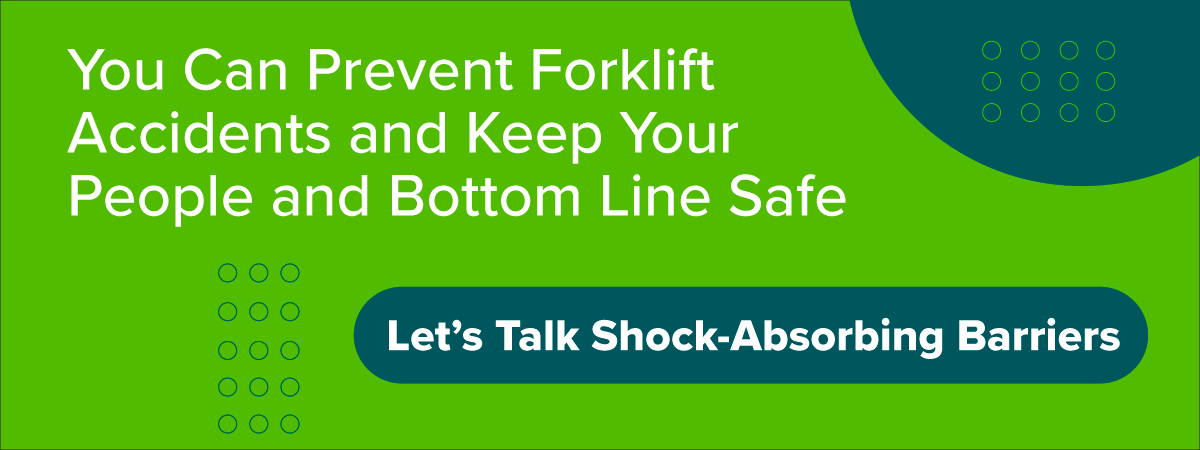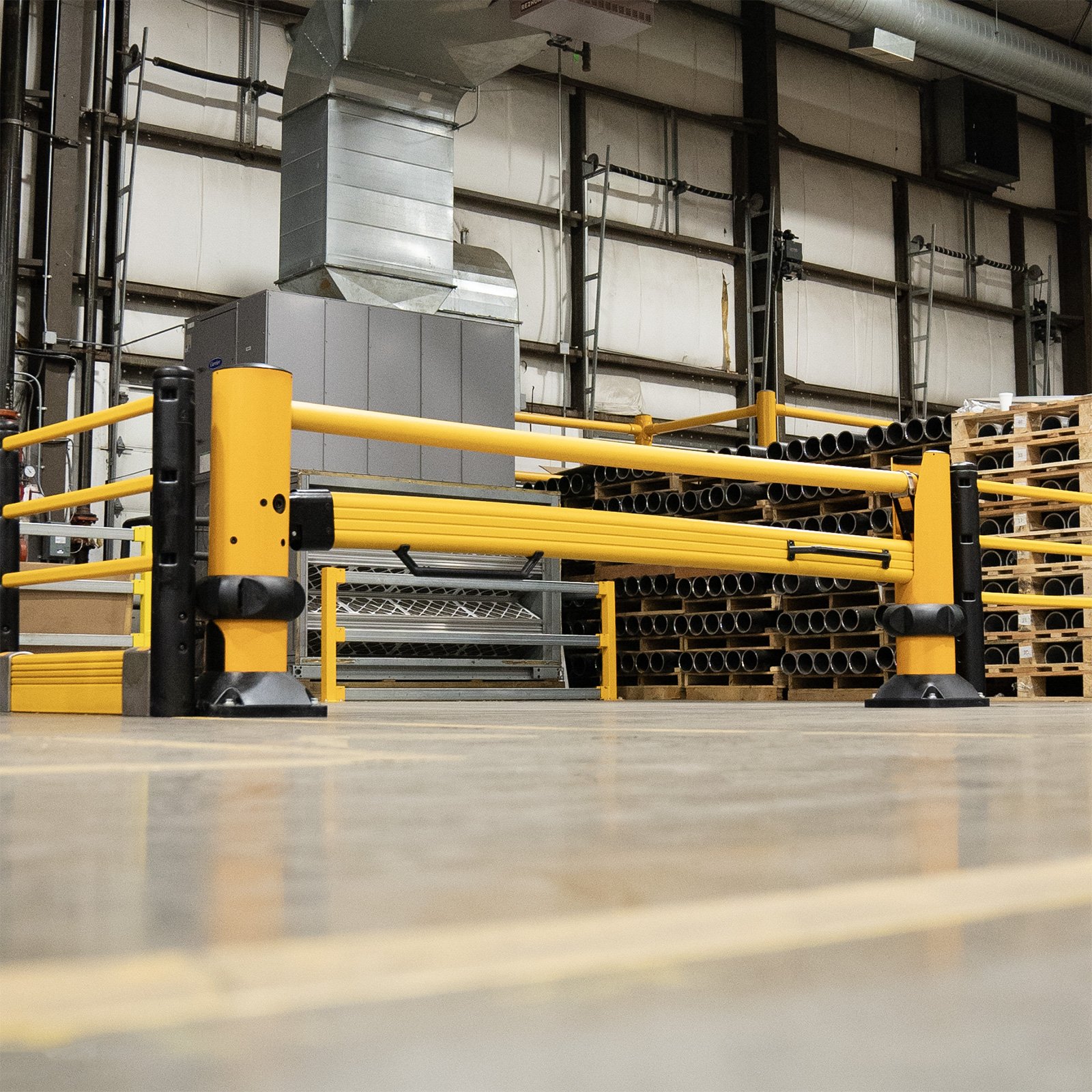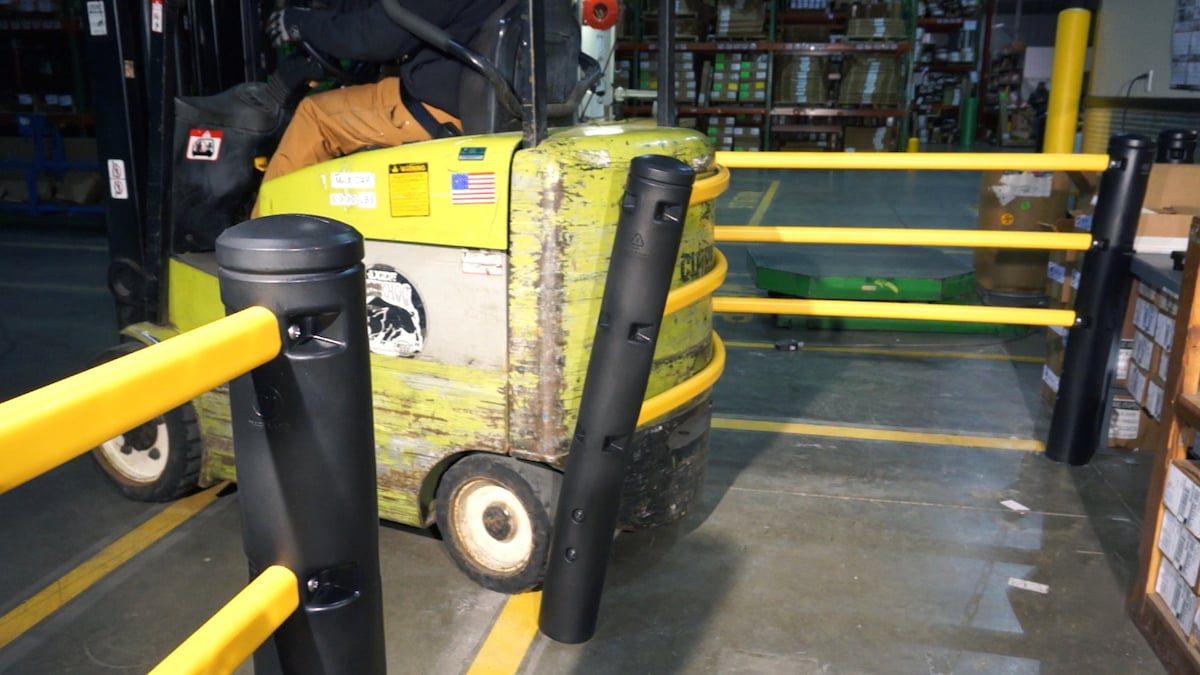From productive workspaces to high-trafficked routes, forklifts and forks are a major safety concern on the facility floor. Unprotected areas can mean crushed or punctured pallets, ruined goods, costly downtime, and even, worst-case scenario, safety risks to your people.
When it comes to safety barriers and keeping your workplace safe, the smaller sections may seem less important, however, these seemingly small gaps are paramount. Preventative measures in these areas keep pedestrians and operators safe, protect your facility, and your bottom line.
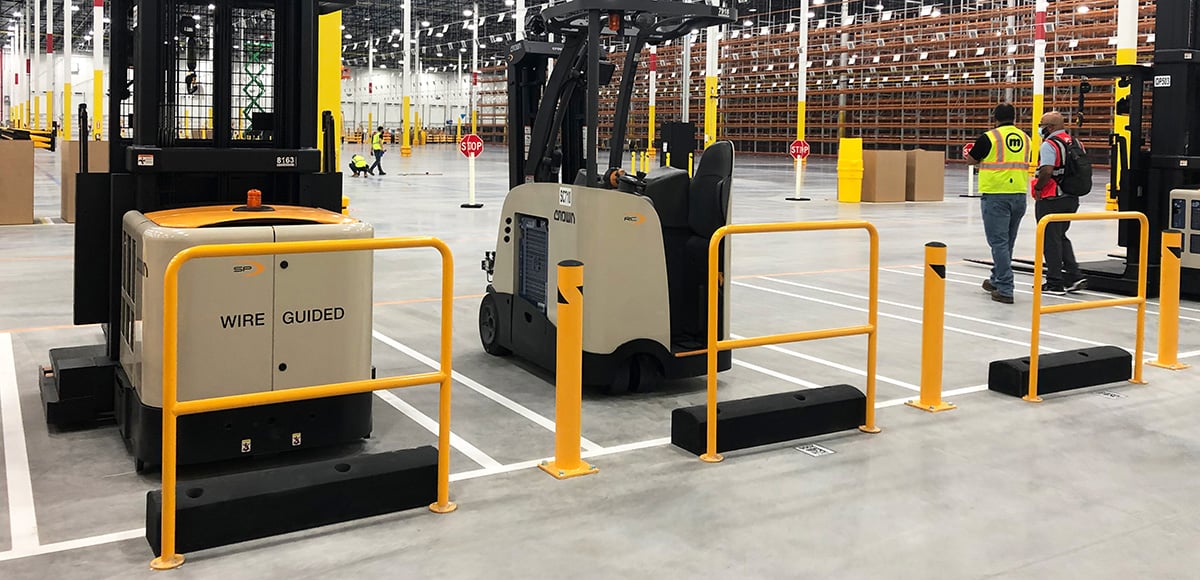 The first step: develop a plan. Take a look through your facility and identify where you could use low-level protection — maybe where your pallet trucks come in to grab goods or a station near a doorway.
The first step: develop a plan. Take a look through your facility and identify where you could use low-level protection — maybe where your pallet trucks come in to grab goods or a station near a doorway.
This can include areas like this handy safety checklist:
- Material Handling Entry Points – Existence of guarding that protects fixed equipment and work cells from vehicle impacts.
- Pallet Rack Uprights – Installation of protection against impacts in high traffic areas, tunnel bays, and end of rows.
- Pedestrian Aisles – Defined and physically separated from industrial vehicle traffic, conveyors, robotic equipment, and other hazardous areas
- Rack and Shelving – Application of guarding that prevents loose objects from falling into walkways, work areas, or flues.
- Shipping Docks – Presence of guarding that protects against impact damage, falls, or unauthorized entry.
- Fixed Structures – Application of protection against industrial vehicle impacts around in-plant offices, electrical equipment, racks, sprinkler mainlines, and more.
- Work Cells – Verification that personnel in designated work cells are isolated from vehicle traffic.
Designing a safety blueprint is key to tackling industrial safety. Want help with it? Our safety experts can help you walk through it (and through your facility). A trained expert will not only see your current concerns but anticipate potential safety risks — to make sure your people are protected.
Safety Inspections
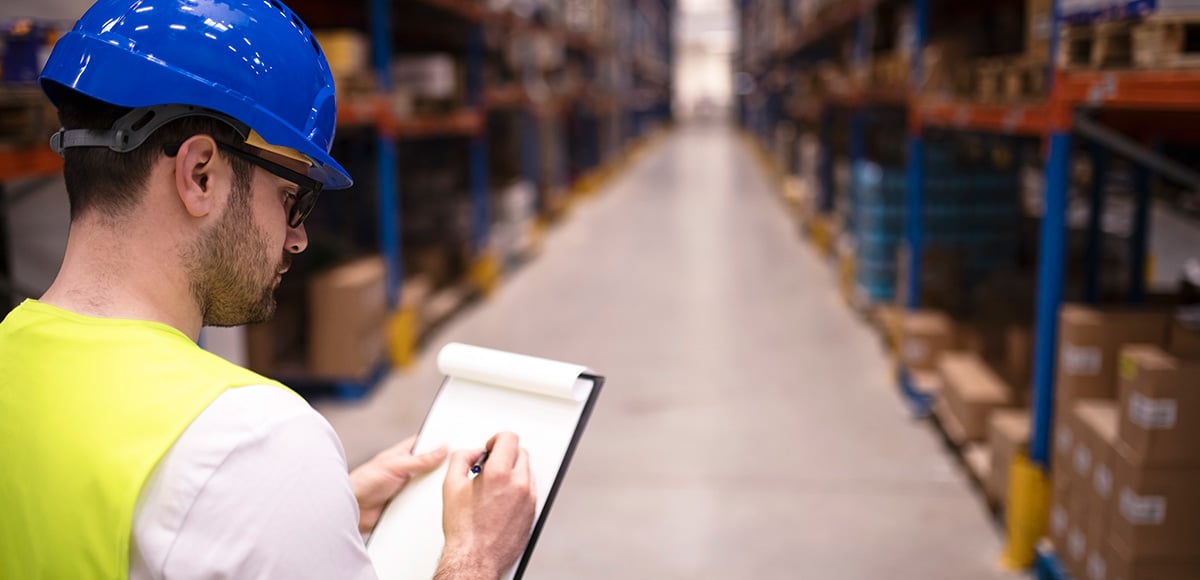 Inspect any and every piece of equipment prior to use. Checking the tires, the forks, the controls, and directionals can prevent accidents. Make sure the forks are correctly aligned. If they're pushed into the load, they can cause damage. Ensure all mirrors are in place and there are no leaks.
Inspect any and every piece of equipment prior to use. Checking the tires, the forks, the controls, and directionals can prevent accidents. Make sure the forks are correctly aligned. If they're pushed into the load, they can cause damage. Ensure all mirrors are in place and there are no leaks.
Inspecting doesn't stop there. Take a look at your distribution center. Ensure the floor is level, and routes are safe without any safety risks overhead. Check in with employees and make sure they're up-to-date on safety certifications and practices. Hosting a review and refresh session on forklift safety can greatly reduce your safety risks.
Now, the real bread and butter: get protected. Widely deployed safety protection protects your flooring from forceful impacts meaning longevity for your flooring and facility overall, and, most importantly, it will protect your people.
Not all barriers are built the same though. There are a few main elements at play to consider: strength, impact absorption, and ease of use.
Strength
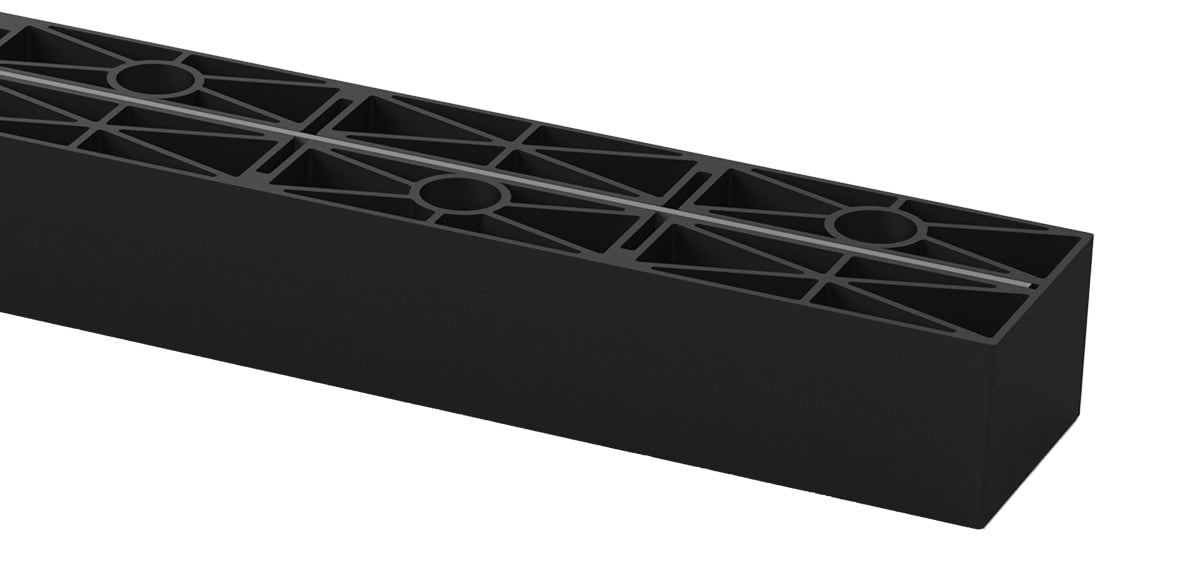 Of course, safety barriers must be strong. Improper protection can be an even more dangerous route due to its false sense of security for operators —who may become harmed when they steamroll right over a weak barrier.
Of course, safety barriers must be strong. Improper protection can be an even more dangerous route due to its false sense of security for operators —who may become harmed when they steamroll right over a weak barrier.
Consider high-strength barriers like SafeStop ForkShield, a floor-mounted safety barrier designed to safely stops moving material handling vehicles. Engineered to safely absorb impacts —with minimum deflection — it protects your people, workspace, and bottom line. It has a large surface area, to maximize its strength and amplify its power.
We engineered SafeStop Forklift to stop 21,500 Joules of impact energy without damage. That's a loaded, 12,000 lbs. forklift moving over 6 miles per hour smacking into your safety barrier.
Impact-Absorption
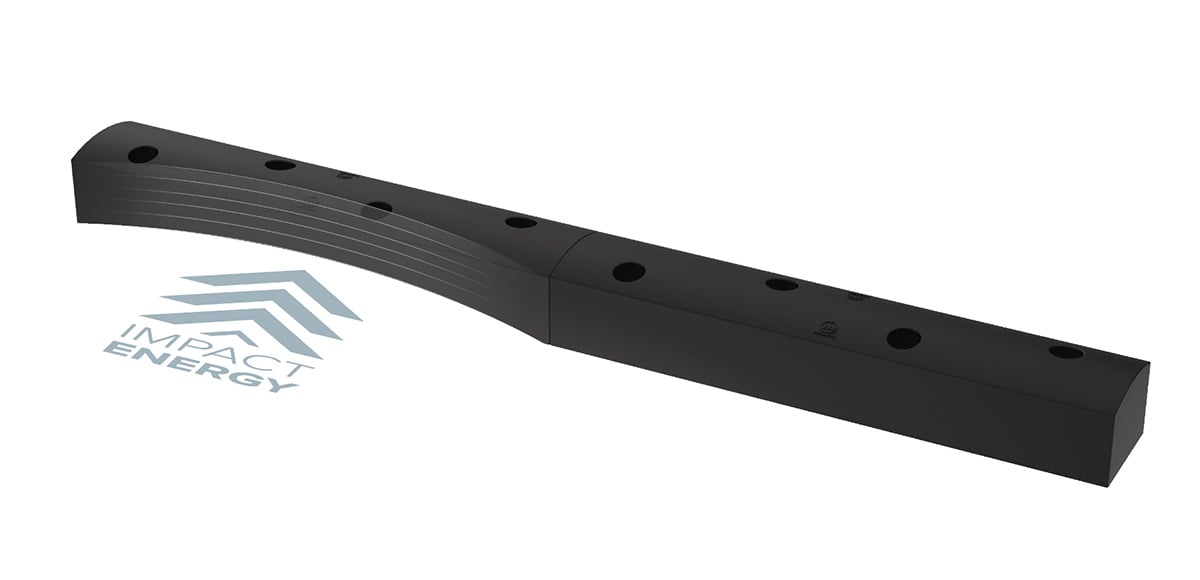 A good safety barrier should absorb and redistribute a hit — so it's not a sharp blow, but a small bump instead. Turning accidents into incidents. That keeps your operators safe from a nasty jolt. Instead, ForkShield prevents damage to the railing, facility, and fork truck by redistributing the impact.
A good safety barrier should absorb and redistribute a hit — so it's not a sharp blow, but a small bump instead. Turning accidents into incidents. That keeps your operators safe from a nasty jolt. Instead, ForkShield prevents damage to the railing, facility, and fork truck by redistributing the impact.
Its shock-absorbency also means low maintenance and a long lifespan.
Easy to Use
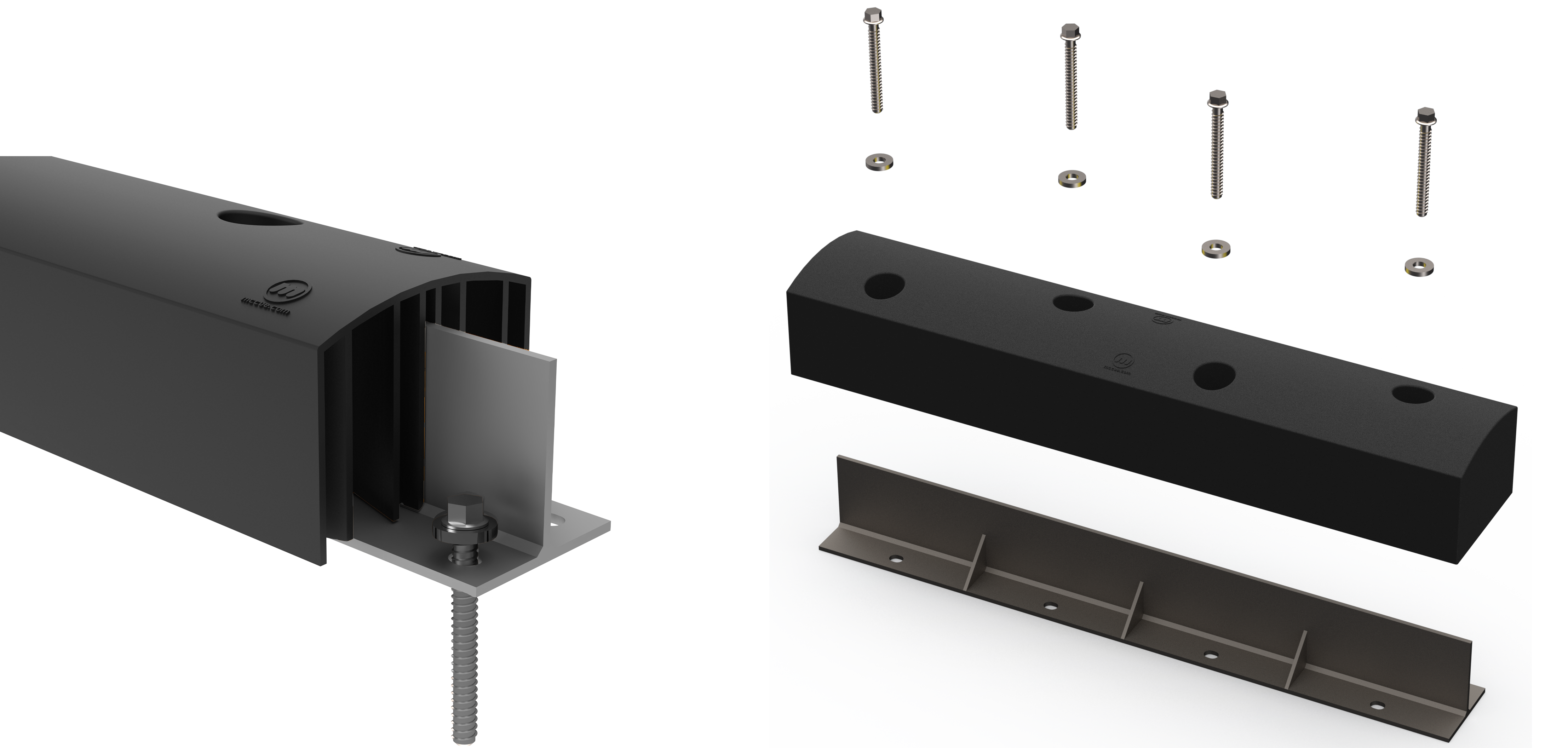
We believe safety barriers should be easy to use and install. With simple hardware and four high-strength anchors, installing our safety barrier is a snap. Learn more about installation from our detailed instructions here.



